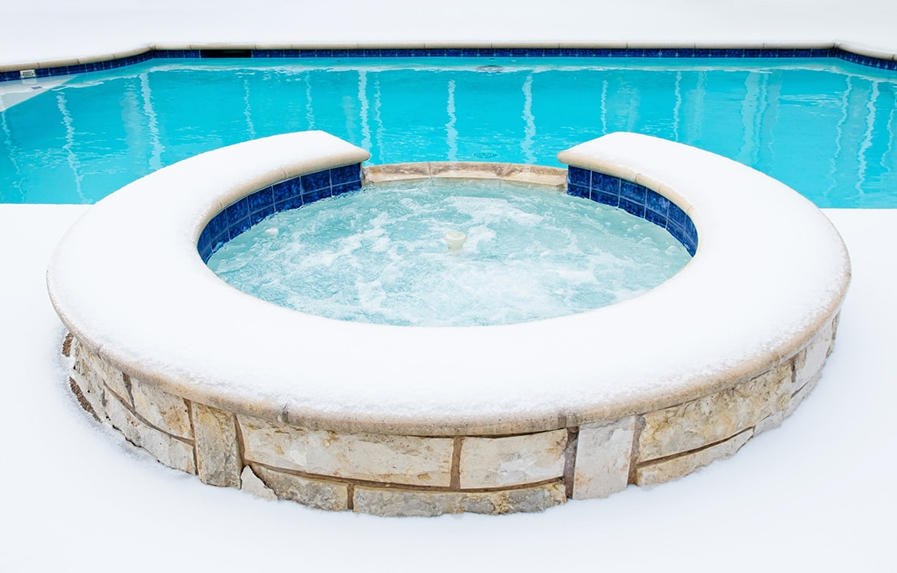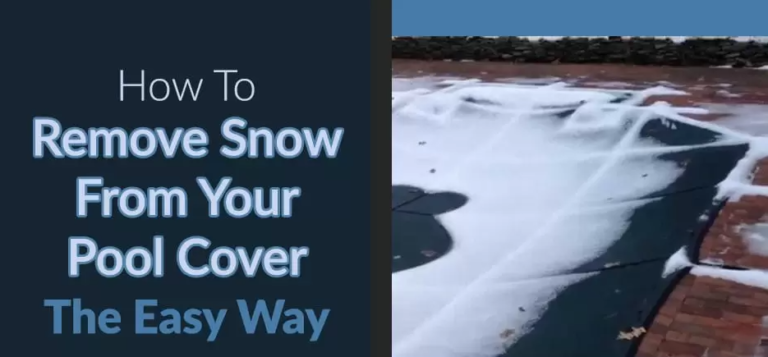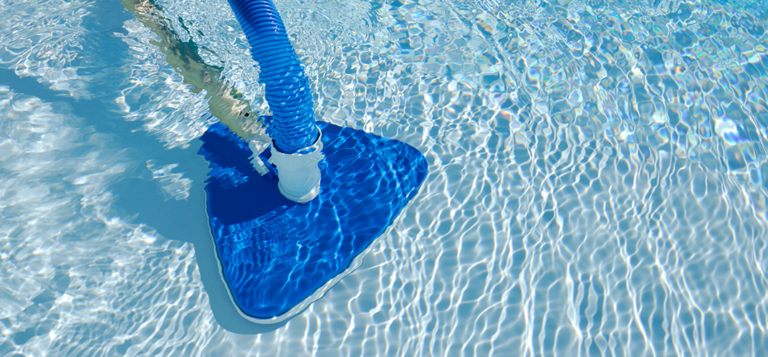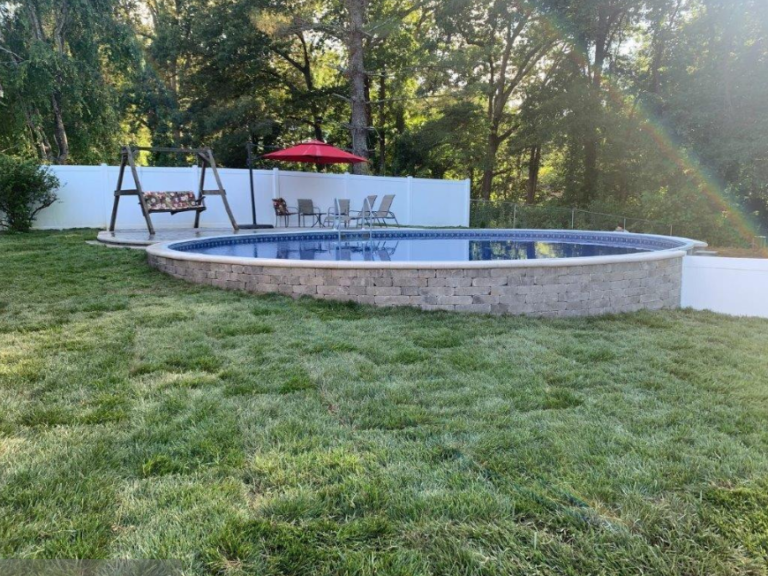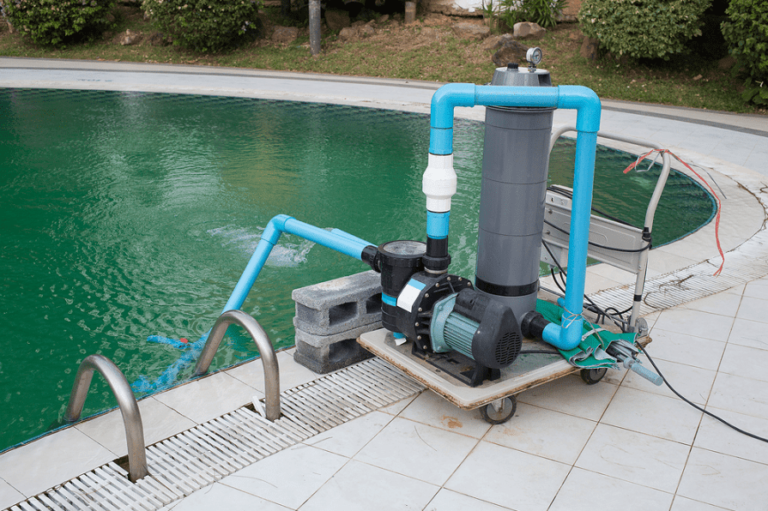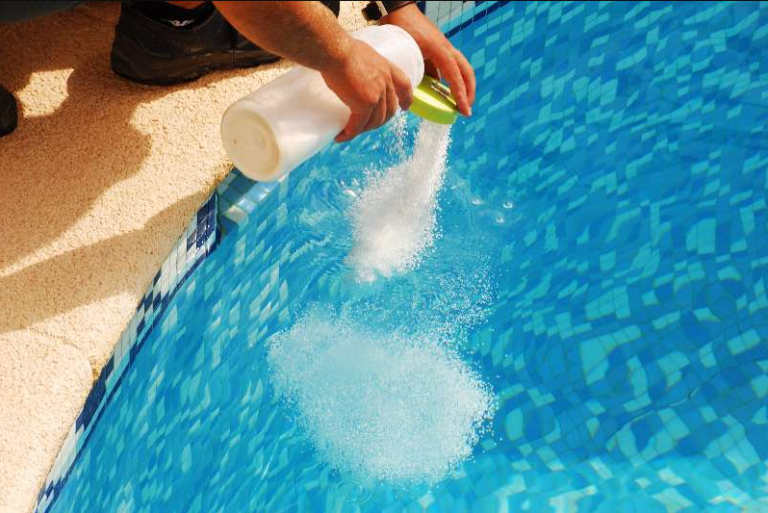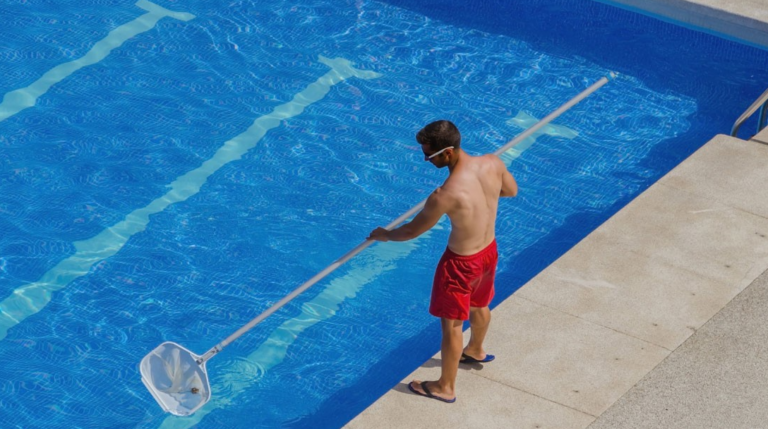All you need to know about Frozen hot tub
Frozen hot tub:
Once you notice that your hot tub is collecting ice on top, take action! The longer it freezes, the greater the chance of damage. Here’s what you can do:
Power off: Freezing components with electricity is a recipe for disaster. Turn off the hot tub and the circuit breaker that leads to the hot tub so there is no chance it will turn on again before you start working.
Space Heater: Place a space heater near the outside of the hot tub, to help melt any ice on the interior components.
Remove ice: If there is ice floating on top of the hot tub that can be removed, remove it. If it’s too solid or too heavy, break a hole in the middle.
Add boiling water: Boil several cups of water on the stove and pour into the hot tub. Be careful not to take the water out after it is too cold. Hot water should melt the ice, but if you leave it, it will freeze.
Use a wet vacuum: The most effective way to remove large amounts of water from a hot tub is with a wet vacuum. Just don’t use your home vacuum, as it is not designed for liquids. You can usually rent a wet vacuum from your local hardware store.
Empty the tub: Continue pouring boiling water and removing melted ice until the tub is empty.
Hair dryer: If there is still ice in the pipes, use a hair dryer to melt it.
Hot tub water can freeze in extremely cold weather if there is a power loss to the spa or if the spa has been lowered but the pipes have not been flushed with excess water. Freezing pipes can result in damage to the pipes/components so it is important to thaw the ice and evacuate the spa as soon as possible until an experienced spa engineer can visit for repairs.

Here are some guidelines to help you melt your spa. If the spa is full of water, the power and water have frozen, you will need to follow these guides when draining the water:
Buy a 75Watt lamp and place it in the appliance area ideally with a pump that circulates the water as it heats up. You should be able to get as much heat into the cabinet as possible to help thaw the pipes and pumps. (Never place the heater directly in front of the pipe as this can cause the pipe to overheat and melt).
Pipes/pumps can take an hour or several hours to defrost – monitor the heater constantly, and never leave it unattended for hours (this is a major fire hazard).
Winter is coming! And with the El Niño forecast, it could be a really cold, snowy winter. That’s good for spa parts salesmen, I guess – because it means a lot of freeze damage to spas and hot tubs.
But as long as your spa is running, at least at low speed, all valves/lines are open, and water is not allowed to freeze to the surface ~ you need not worry about your freeze damage. There is no spa or hot tub.
Most digital spa controllers will have a frozen monitor that will turn the pump on when the outside air temperature reaches 40 degrees. Some also turn on the heater if the water temperature drops too low. But many air controls or simple hot tubs or in-ground spas don’t have built-in freeze protection.
Across the United States, cold fronts are making their effects felt. From freezing temperatures to snow and cold winds, winter can be brutal. While many of us flee to our hot tubs as a refuge, even they are not completely immune to the effects of cold weather. If you’ve ever had a frozen hot tub, you know how bad it can be if it’s not stopped or caught early. One of the reasons hot tub retailers love the winter season is that demand for spa parts that deteriorate when the hot tub freezes are highest.
Even on a cold winter’s day, an outdoor hot tub offers a great place to relax. But as the temperature drops, the chances increase that your tub could freeze, especially if you change the temperature control — which can cause serious damage to your tub. Expensive repairs are required.
Thawing a frozen hot tub quickly is key to preventing long-term damage.
If your hot tub freezes in cold weather, act as soon as possible to thaw it. The process is not complicated, but be careful when defrosting to protect the tub and avoid fire hazards.
Switch off the power supply to the unit.
If you uncover the tub and it’s all frozen, first cut the electrical flow to the system. Manually trip the circuit breaker to ensure that the line does not short out. If the thermostat is manual, remember to turn it off. Power should be restored only after all hot tub components have completely melted.
Remove frozen water.
Using a sharp object such as an ice pick, make a hole in the center of the ice-covered tub. Now add warm or hot water to the spa for faster defrosting. As the ice melts, remove the broken cubes and water before adding more hot water.
For many people, one of the best parts of owning a hot tub is jumping in when the weather is coldest. However, leaving your hot tub open during the winter, especially in our climate, always carries the risk that it will freeze. There are things you can do to protect your hot tub, but what if it’s too late? Here’s what to do if your hot tub freezes.
To help things along, you can also drill a hole in the center of the frozen water and start pouring warm to hot water (don’t pour hot water directly onto the spa shell as this can affect the surface or crack the shell. (can) will start defrosting the water.
Once all the water in the spa’s pipework and the shell is defrosted you will need to open the drain valve and allow the water to drain, (using a submersible pump will help drain the spa faster) Once the spa is empty of water, you will need it. Go to the pump/heater and open the pipework to release any residual water to prevent freezing in the pipe. (A wet and dry vacuum would be ideal to flush out any remaining water jets and pipes).
Ways to prevent spa freeze damage:
Set a temperature alert on your phone: there’s an app for that! Instead of relying on the weather report, you can use one of the many apps that will alert you (via smartphone) that the temperature is expected to drop below a certain set point. Then, make sure the spa is hot and working.
Install a digital spa pack with freeze protection: As mentioned earlier, if you have an air-controlled, or in-ground spa, you may not have built-in freeze protection. Upgrading to a digital spa pack, or for in-ground spas, installing a digital time clock, will allow your system to automatically turn on the pump when it senses low outside temperatures.
Keep the spa warm during the winter: To protect against power outages, keeping your spa warm all winter will give you the most uptime. A spa that is kept at 100 degrees and tightly covered can maintain heat for 24-36 hours during a power outage. An unheated spa, with very low temperatures, can freeze solids in just one hour of no circulation.
Keep your spa cover firmly in place: Some parts of the country are so cold… “How cold is it Johnny?” – It’s so cold… that just leaving the spa cover off for a few hours can actually start to muddy the spa water.
Check your spa regularly. Even if you’re not using it on a daily basis, you should still check to make sure it’s working. Untold damage can occur in less than 24 hours. If you’re not one to use your hot tub during the winter months and aren’t likely to keep an eye on everything regularly, it’s best to winterize your hot tub and keep it empty. Just make sure you blow up all the jets and pipes so nothing freezes.
Install Digital Spa Pack with freeze protection. For in-ground spas, installing a digital clock will allow your system to automatically turn on the pump when the outside temperature drops. Most digital spa controllers will have a frozen monitor that will turn the pump on when the outside air temperature reaches 40°F.
Do not lower the temperature too much. Keeping your water hot during the winter will protect your appliances and be the most energy-efficient way. Some people may think that turning their water below 90° is a good way to save energy. This is not. If you have a power outage or your heater goes out sometime during the winter, a steady water temperature between 100-104° and a tight-sealing hot tub cover will keep everything well insulated and warm. Will keep you safe. This hot water can often retain its heat for 2-3 days during power outages. Unheated water with low outside temperatures can freeze in just one hour of not circulating. Once frozen (even if power is restored) the spa will not be able to circulate water and heat itself.

Your cover! Having a hot tub cover that is well maintained and that seals keep everything clean and working. In some parts of North America, it’s so cold that covering a hot tub for even a few hours can cause it to become slushy. Keep the cover on when you’re not using it and make sure it’s doing its job, meaning it has no tears, isn’t collecting water, and is closed all the way around the spa shell. Is. If you have clips, make sure they are fastened so the cover stays secure and won’t be lifted by the wind during any blizzards.
If you think your spa has stopped working during the winter and may freeze, don’t panic. Check it first while the water is still warm and see if it can be fixed before it needs to be drained and refilled. Hot tubs are specially designed to prevent freezing. Most modern tubs have a large volume of hot water that cools slowly and will help keep it from freezing, hopefully giving you enough time to settle without draining the water.
Heat things up.
Before dismantling and removing your system, turn off the power at the circuit breaker. You don’t want any electricity to run while you’re in the process of heating things up. The most common way to thaw your stuff is with a portable space heater. Set it in the compartment that contains your pump and make sure it is facing inwards. Make sure not to leave it unattended!
If the water surface on your tub is solid, open it in the center with a sharp tool. Whether it’s through a hose from your kitchen sink or using large containers, pour hot water into the hole you’ve made to bring the water temperature back up. As everything continues to melt, drain the tub completely with a shop vacuum. Finally, you will need to drain your system so that it is completely free of water.
Turn off your hot tub.
If the pump is not working, you must turn off the hot tub. I would recommend turning it off using a GCFI breaker. You have to complete all the steps below in a few hours. If it takes you longer than that and leaving the hot tub off for a few days, it could do more harm than good.
If the pump is working, and some water is moving, it’s a good idea to leave the hot tub on. Of course, if you have to remove the pump or any other part from the hot tub, you must turn it off. You don’t want to mix water and electricity.
How do you prevent this potential disaster from happening again? There are a few ways to protect your hot tub from freezing, but the best is to have a hot tub that is well-insulated and cold-resistant, with a quality heat shield on top. Oakville Home Leisure has standard heat shields that you can add to your existing hot tub and options that will ensure you have everything you need.
You can also take out and winterize your hot tub before the cold weather hits, but you won’t be able to use it then, which for many people is half the fun. For other tips on how to prevent your hot tub from freezing this winter, please contact us today.
If the power to the spa has been accidentally turned off by the switch and has just started freezing, you may be able to fix your spa without draining it.
Pour hot to hot water into the center of the spa until the water is defrosted (do not pour hot water directly onto the spa shell as this may affect the surface or crack the shell).
Turn on the power to the spa and check each pump to make sure it is circulating water. If there is no water circulation, follow procedures 1 to 4 above.

If the water in the spa is running, it will begin to run at high speed and IC or ICE will appear on top. Pumps 1, 2, and blower (pump 2 and blower only on select spas) will run continuously until the spa water temperature rises above 7.5 degrees. Once this temperature is reached pump 2 and the generator will stop and pump 1 will be running at low speed and heater.
If your spa only has one pump – turn pump 1 on high speed, and it will start generating heat and hot water as it passes through the pump.
Identifying Freeze Damage:
Most cracking or damage from ice expansion occurs in the heater body, usually, a stainless steel cylinder, mounted horizontally, the filter body or lid, a vertical plastic cylinder that holds the filter cartridge, or the pump. Happens to the body or lid. Spider web cracks in pipes, not cleanly distributed, but scattered along long lengths, or through fittings.
As the spa begins to heat up, from the heat below and the hot water above, condensation will drip from the spa, don’t panic. But running water… (not a slow drip), and you may have some broken equipment or pipes. After identifying which hot tub parts are needed, you can completely drain the spa by opening all drain valves or plugs and using air to blow out the pipes and equipment.
If you don’t see any running water, and you don’t see any cracked spa equipment or pipes, you can turn the spa back on – check again for running water while pressurizing the system. to do If it looks normal, and seems to be running fine, then relaxes – you caught it in time!
If your hot tub is frozen (to varying degrees), here are the steps you need to take to open and protect your equipment.
Turn the power to the heater and pump off at the circuit breaker. If you have a small space heater, place it next to the pump box so that the internal pipes begin to rise. Always check the space heater and do not leave it unattended.
Use something like an ice pick to stick in the middle of the water until a hole is formed. Pour buckets of hot water into the system either from the tub or boil on the stove to melt the ice.
Start draining the hot tub from the wet/dry area. Continue this process (add hot water, remove melt water) until all the ice and water are gone.
Open the drain valve on the pipes and allow the space heater to melt and drain out of the pipes.
If necessary, use something like a heat gun to finish melting the pipes. Starting at the drain, hold the heat gun a few inches away from the pipes and gently move the pipe from side to side as it moves up. Keep it moving to prevent heat loss.
Use a wrench to open the pipe joints while you are applying heat. Open the junction of the pump and the heater to let the melt water out.
What is the damage?
This can be a stressful moment, as losing a pump or filter is not a pretty sight. You don’t want to miss anything, so check everything from the wet end to the heater body as thoroughly as possible. Pipe damage won’t be obvious, so it’s always a good idea to carefully inspect with a flashlight for small cracks. To be safe, getting an expert damage assessment is the most effective move you can make and gives you the best peace of mind.
Most freeze damage is minor – a pump wet end, a bit of pipe, maybe an entire spa pack – but rarely does it total the entire spa. There have been cases where a spa has been frozen solid for weeks, and it has literally exploded. Even when some parts are reusable, the cost of re-piping the spa is prohibitive. If you discover a frozen hot tub early on, consider yourself lucky with a few hundred dollars in spa parts.
After your pipes are drained and the unit is drained of water, you need to look at the equipment and determine if repairs are needed.
Most of the freezing damages the following parts: wet part of the pump, spa plumbing, spa pack, etc. These are the things you should check first. All of this can be fixed fairly easily if caught early. If the spa has been frozen for weeks, chances are the hot tub is beyond help.
Turn on your equipment and make sure it’s working. If the hot tub is empty, do not leave the pump and heater on for more than 2-3 seconds.
Any expansion caused by freezing causes most of the cracking damage to the heater body, filter body, filter cartridge holding cylinder, or pump. Pipes rarely have a clean break. Rather, they have thin cracks that can eventually disintegrate.
Filling the tub is a good way to see where the leaks are coming from. Once the tub is filled with water, keep an eye on the running water which may indicate a leak from a broken pipe or infected appliance. After identifying the parts that need fixing, you can drain and repair them. For small leaks, you can use Fix-A-Leak to seal and repair the damage.
If you don’t see any running water, you can turn the spa back on to check for any unusual sounds and water leaks (not slow drips). If everything looks good, there’s a chance you caught everything in time and saved yourself a few hundred dollars in repairs.
Preventive measures
Of course, the only thing better than a successful meltdown and inspection is damage prevention. Hot tub owners often forget a few important things to keep things running smoothly during the winter months. Many hot tubs have freeze protection features, but if yours doesn’t, never forget to run your pump when the temperature drops and keep the water warm and moving. If you’re planning to leave town, don’t forget to stay in winter!
While heating, you can use a wrench to open the pipes. Opening the wrench will allow the melted water (which was inside the pipe) to drain out.

Break the ice
If your hot tub is outside, the water in your hot tub will freeze. If this has happened to your hot tub, you need to break the ice. You don’t have to break all the ice completely, just use an ice pick to chip the center of the ice.
Break through the ice until you reach the water below. After touching the running water, it’s time to move on to the next step. Note: Always be careful and don’t hurt yourself while breaking the ice.
Add hot water.
Once you make a hole (by breaking the ice) you need to pour hot water through the hole. Place the warmer directly over the ice and into the ice (using the hole).
You can use wet/dry AC to get rid of cold water. Get rid of the cold water, and add hot water, continuing this process until all the ice has melted, and you can clearly see the hot tub water.
Drain the water.
Once you have completely melted the ice on your water, you should drain the entire hot tub. Open the drain valve, and drain the water.
You should also drain the water from pipes, pumps, and heaters. Open them all and check if there is any water. If you get water, you can use wet/dry AC to get rid of it.
Cut the power and remove the ice.
When you realize that you have a frozen hot tub, immediately turn off the power to the hot tub at the circuit breaker to ensure that no current flows through the line and to ensure that it is shut off. please confirm. If the thermostat is mechanical, turn it to the off position. Thaw all pipes and internal mechanisms before restoring power to the system, especially if you have digital controls for the hot tub, or risk serious damage to the unit. If the water in the tub is frozen, use an ice pick or other sharp tool to remove the ice so that a hole is made in the middle. Boil several pots of water on the stove and pour it into the tub to help melt the ice. After adding each bucket of water, use a wet-dry garage vacuum to remove ice and water from the tub. Repeat this process until you have emptied the entire tub.
Heat the unit using a space heater or heat gun.
During extreme winter conditions, spa components are more likely to freeze than the entire tub. If this is the case, skip step 2 above.
Set the heating element in the appliance area. A 75-watt lamp or electrical space heater will suffice. But two heaters placed on opposite sides of the pump compartment facing each other will speed up the process. For greater efficiency, you can block the heater inside the cabinet using a heavy blanket. Once the pump has melted and can turn, remove the heating element.
It is worth noting that the heater in such a setting is a potential fire hazard and should always be taken care of.
For frozen pipes, a heat gun is held a few inches apart and moved back and forth along their length, just enough to defrost them. Do not bring the heat gun too close to the pipes as they may overheat and melt later.
Defrosting of spa components, including pipes and pumps, can take several hours depending on the severity of freezing and heating performance.
The perfect match
Considering the therapeutic benefits of both hot tubs and meditation will give you an idea of how effective the two can be when combined. Immersing your body in water between 37-40 degrees Celsius balances the parasympathetic and sympathetic nervous systems and releases endorphins, resulting in that relaxing feeling we all know and love. It also improves blood flow, delivering oxygen and enzymes to your muscles to reduce pain.
Stress plays a big role in modern life and can significantly affect our health, so use meditation as a way to complement other treatment methods and make things a little easier for the body to deal with. But it has become popular. It has been shown to help relieve high blood pressure and may contribute to improving your immune system. Put the two together and you’ve got the perfect recipe for rest, relaxation, and even better sleep!
Use the heat gun.
If you don’t have a heater, or your heat wasn’t able to unfreeze the pipes and pump, you can use a heat gun. A heat gun is a very powerful tool, so keep a few inches between the tool and the pipe.
Heat guns blow hot air up to 1200 degrees, and it can easily melt your pipelines. When using a heat gun, move your hand around, don’t blow the hot air over one spot for too long.
Recommended technique
If you’re new to meditation, five to ten minutes might be a good place to start. Setting a gentle alarm for yourself, such as a cell phone set to vibrate, will allow you to devote this time to fully relax. Be sure to turn off your jets to avoid noise distractions. Once you’re comfortable in your tub, close your eyes and spend those minutes just focusing on deep, balanced breathing and the feel of the tub. More detailed meditation techniques vary by preference, so finding a system and set of instructions that work for you is highly recommended!
How to freeze a hot tub without water?

If your hot tub was only shut off for a few hours during the winter, and it’s just starting to freeze, you can freeze it without draining it.
Add hot water.
If the ice is just starting to freeze, pour hot water directly into the center of the spa. Continue adding hot water until the water in your hot tub is defrosted. Do not add hot water near the edges of the spa or directly into the spa shell. This can damage, or even crack, the shell of your hot tub.
Heat it up.
Even if the water in the tub is not frozen, its components can freeze in cold weather. To help thaw pipes and other equipment, use a pair of portable electric space heaters and set them so they face the pump casing. The tub usually thaws faster if you can actually turn off the heater inside the appliance. Never leave space heaters unattended, as they can become a potential fire hazard if left alone. Place the heater on the pump until it breaks and cannot be turned. If the pipes connected to the hot tub are frozen, use an electric hair dryer or heat gun to help thaw them. Hold it several inches away from the pipe and move it back and forth along the pipe. Keep the tool moving so you don’t cause heat damage to the pipes.
Open the drain valve.
After defrosting is complete, open the outlet valve to empty the hot tub of any water. A submersible pump can help drain the tub quickly if it is full. Also, open the pipework to release residual water and reduce the chance of subsequent freezing. A wet and dry vacuum can be quite useful in cleaning any residual water from the pipes.
Carefully inspect the tub for any damage.
Now, it’s time to closely inspect the spa for any ice damage. To help you get rid of hairline cracks in the pipes, call your hot tub engineer who will inspect the entire unit. The most vulnerable to the effects of ice are the pump body, filter body and heater body.
Any damage should be repaired immediately even if it is a small crack in the pipe as it increases the risk of future bursts. Sometimes, you may not find a problem even after a thorough inspection.
Check your pumps.
Different hot tubs have different numbers of pumps. I have 4. Check all the pumps in your hot tub to make sure they are circulating water. If they are not, use the methods above to freeze them. Do not proceed to the next step until all of your spa pumps are working properly.
Aim for maximum comfort
Maximizing the effects of your hot tub meditation involves improving the comfort of your hot tub environment. It can do anything from aromatherapy hot tub products to a tub that ensures the perfect comfortable fit for your body type. This will allow you to gather the best approach to relieve your stress. The more enjoyable your hot tub experience, the more effective your hot tub meditation will be!
Proceed with caution
Once you’ve defrosted the tub and drained it of water and ice, it’s time to assess potential damage. Call a hot tub service professional to inspect the tub after it has completely thawed. Your technician will check the entire system for long-term damage from freezing, such as internal leaks or cracked pipes. If you have caught the frozen in time, you may not have a problem. But broken pipes, even hairline cracks, need to be replaced immediately because they can break or burst.
The water is automatically heated.
When all of your hot tub pumps are working properly, they will see the temperature of the water, and 2 of them will start running at high speed to heat it up. Usually, your control panel (IC or ICE) will display an error, don’t worry about it.
Once you unfreeze the pump and pipes, the water will start heating automatically. You just have to wait a few minutes and the cold water will run out.
Once the pumps (pump 2 and blower) heat the water above 7.5 degrees they will stop. Pump 1 and the heater will start running at low speed. As I said earlier, different hot tubs have different numbers of pumps. If your hot tub only has one, you may need to start it manually at high speed.
Avoid future freezes.
When the tub is back in operation, take steps to prevent future freezes. Verify if your model has a freeze protection mode to monitor the temperature and turn on the circulation pump if the water is close to freezing. Check to make sure the mood is busy as winter approaches. If your hot tub does not have a freeze protection mode, make sure the pump is on. When a cold spell is expected, keeping the tub jets open and moving water through the system prevents freezing. If you don’t plan to use the tub for three months or more, winterize it by draining the water and blowing air through the lines to force the water out of the hoses, pipes, and other equipment.
How to Identify Hot Tub Freeze Damage?
You may have defrosted the hot tub, but that doesn’t mean you’ve saved hot tub. If your hot tub has been frozen for a long time, you will most likely need to send it in for professional repair.
But, before you do that. There are a few things you need to do to check if your hot tub is damaged.
Drip cap
Even on a cold winter’s day, an outdoor hot tub offers a great place to relax.
After adding each bucket of water, use a wet-dry garage vacuum to remove ice and water from the tub.
Call a hot tub service professional to inspect the tub after it has completely thawed.
Your technician will check the entire system for long-term damage from freezing, such as internal leaks or cracked pipes.
If you don’t plan to use the tub for three months or more, winterize it by draining the water and blowing air through the lines to force the water out of the hoses, pipes, and other equipment.
What should I do if my spa just started freezing?
If the hot tub has just started freezing after an accidental power outage, you can fix it without draining the water. Here is the procedure:
Make a hole in the center of the ice. (In this case, only the top water should freeze.) Pour hot water into the center of the tub until all the ice melts.
Turn on the power to the unit and verify that all pumps are circulating water. No rotation indicates that the components are frozen and this requires you to follow the initial procedure above to defrost the hydrotherapy machine.
If the hot tub components are not affected, the appliance will start running on high-speed mode while displaying ‘IC’ or ‘ICE’ at the top. Both pumps 1 and 2 will run together with the blower and heater to heat the sump water to 7.50 C. After that, only pump 1 plus heater will run at low speed.
Check the pump and heater.
First, start your hot tub. Don’t fill your hot tub just yet. Start your pump and heater and leave them on for 2-3 seconds (leaving them on for longer can damage them). If they start working and don’t make any strange noises, go to the next step.
How can I prevent my hot tub from freezing?
After the mess is cleaned up and your spa is back to normal, use these nuggets to prevent future potential freezes during the winter.
If your spa has a freeze protection mode, make sure it’s engaged as winter approaches.
For tubs without built-in freeze protection functions, such as in-ground spas, you can install a digital time clock that automatically switches the pump on when it detects cold ambient temperatures. How can I prevent my hot tub from freezing?
After the mess is cleaned up and your spa is back to normal, use these nuggets to prevent future potential freezes during the winter.
If your spa has a freeze protection mode, make sure it’s engaged as winter approaches.
For tubs without built-in freeze protection functions, such as in-ground spas, you can install a digital time clock that automatically switches the pump on when it detects cold ambient temperatures.
Keep your tub hot and running when extremely low temperatures are expected. In addition to weatherman reports, you can use mobile apps to receive temperature alerts and consequently keep your spa running if the temperature drops below certain limits.
Protect your spa from the effects of power outages. A power blackout during an unusually cold winter can see an unheated tub freeze within an hour. Heating your tub to 1000C and covering it tightly can help keep it warm for more than a day after a power outage, thus preventing freezing.
Winterizing the hot tub allows you to turn off the unit if you have no intention of using it during the colder months. Sundance hot tubs have an internal mechanism that maintains a certain level of water temperature to ensure the spa is not damaged by freezing temperatures.
However, prolonged periods of non-use or power outages may result in you having to winterize it.
Turn off the power to the hot tub. You can do this on a breaker or ground fault circuit interrupter (GFCI), depending on your hot tub setup.
Remove the outer center panel of the tub just below the control panel.
Locate the drain port. Connect a garden hose to this port and turn it on, which will begin the process of draining the tub.
Close the drain port when the tub is half empty. Turn on the power to the hot tub. Turn on the blower to force water out of the spa’s internal plumbing.
Turn the power back on and continue draining the tub. Use an outlet vacuum to remove any remaining water in the footwell and other areas of the tub.
Remove the outer panels covering the spa’s internal equipment. Open the drain plug through each pump to drain water from these pipes and the pump or heater.
Protect your spa from the effects of power outages. A power blackout during an unusually cold winter can see an unheated tub freeze within an hour. Heating your tub to 1000C and covering it tightly can help keep it warm for more than a day after a power outage, thus preventing freezing.
If you are not going to use the tub for more than 90 days, drain all water from the unit and install the spa cover. Blowing through the lines ensures that no water remains in pipes, pumps or hoses and eliminates any risk of freezing.
The facts
Pumps that do not work may require you to reset the power to the spa. You can either press the “reset” button on the GFCI or turn off the power at the breaker. After you power it on, the pump will re-prime, trying to fix any problems.
appraisal
Low water inside the hot tub or a very dirty filter can limit the amount of water pumped out of the tub. This will cause the pump to operate incorrectly and possibly not at all. A build-up in the tub can also cause pump problems.
Fill your hot tub.
Fill your hot tub and start everything, including the pump and heater. Check if the pumps are moving water, if yes then they are fine.
Leave the hot tub on for a few minutes and check if you see any water running or leaking. If you see any leaking water, try to locate it. If there is a light crack you can try to seal it, if there is a big crack it is better to send it for professional repair.
While the hot tub is running, check for any strange noises that you haven’t heard before. If you hear a strange sound, try to find it.
If you don’t, and if everything is working properly, you most likely did it quickly and there is nothing wrong with your hot tub. Congratulations, you’ve saved yourself a few hundred dollars.
Reservations
Noise, humming, or excessive vibration can indicate major pump problems. You can open the access panel to make sure all the pump valves are open and there are no plumbing problems. Replacing the pump may require a service call from the dealer.
Temperature regulation
A hot tub’s water pump system has an integrated heater that maintains the water temperature while filtering the water. Standard operating mode monitors the water temperature and adjusts it as needed every 30 minutes, keeping your tub at a constant temperature for continuous use. The economy setting uses less power, only monitoring and adjusting the temperature during the filtration cycle, usually twice a day. This can result in temperature differences of a few degrees, especially in cold weather. Sleep mode keeps the water temperature 20 degrees lower than the programmed setting, saving more energy when you don’t plan to use the tub for a while. Standby mode completely disables functions and stops the filtration cycle, heating, and temperature monitoring.
Range and defaults
The default temperature on a Bullfrog hot tub is 100 degrees Fahrenheit. When you install a new Bullfrog tub, the system automatically heats the water to 100 degrees. You can program the tub to maintain a water temperature of 80 to 104 degrees based on personal preference.
Reservations
Hot tubs should never be heated above 104 degrees Fahrenheit. If the hot tub temperature is too high, your body may overheat. Pregnant women should not use hot tubs, as increased body temperature is unhealthy for pregnancy. Hot tub temperatures should be very moderate with children, and the tub should be secured to prevent children from drowning.
